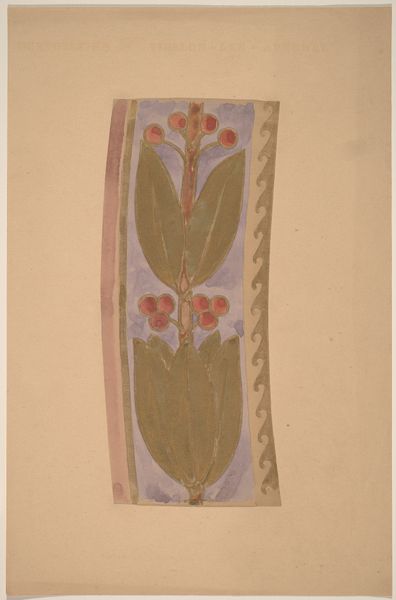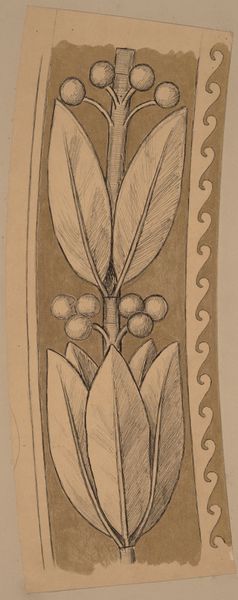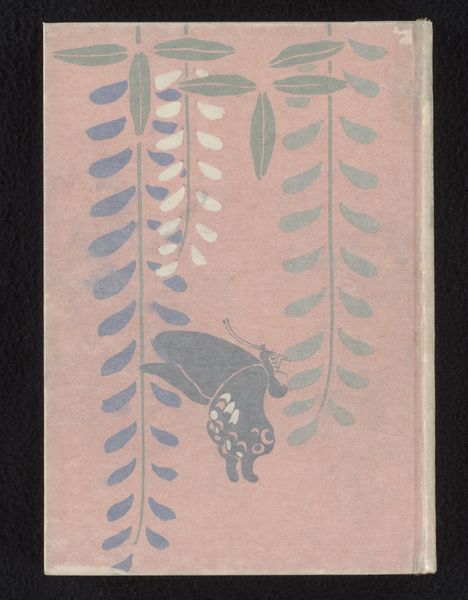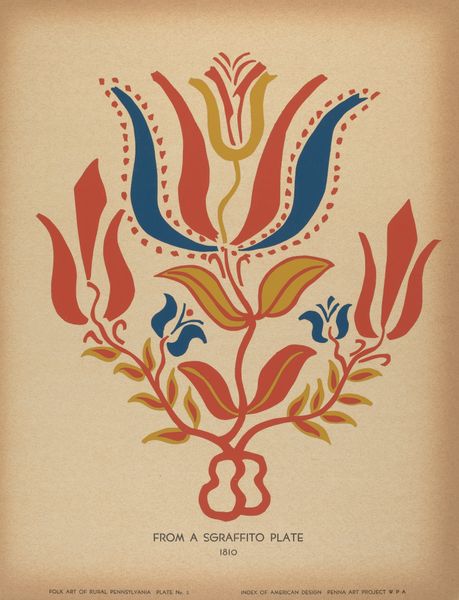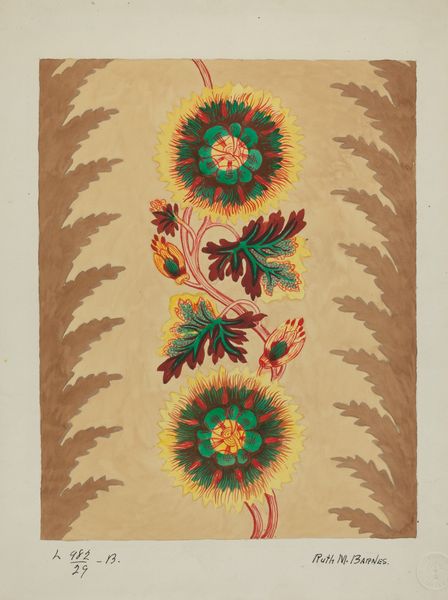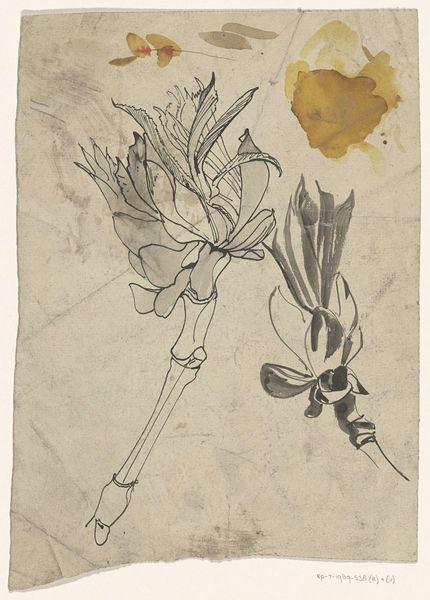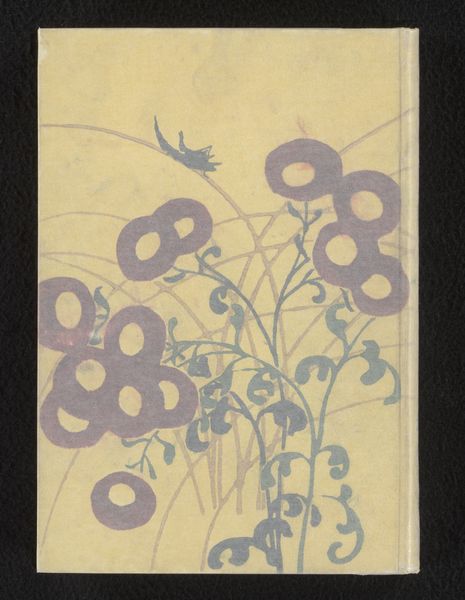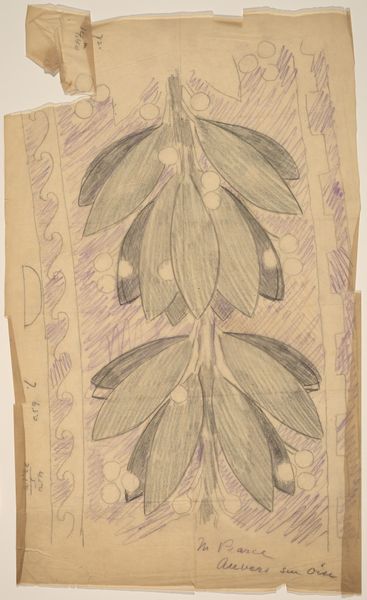
drawing
#
drawing
#
organic
#
art-nouveau
#
organic pattern
#
decorative-art
Dimensions: sheet: 32.8 × 25.4 cm (12 15/16 × 10 in.)
Copyright: National Gallery of Art: CC0 1.0
Curator: I find Charles Sprague Pearce's "Study for a Border Design" from the 1890s quite compelling. Made with drawing, this work strikes me with its organic and patterned motifs. What do you make of it? Editor: I'm drawn to the Art Nouveau style of this design. The delicate rendering of the leaves and berries gives it a peaceful quality. The materials and process are central to what it conveys. It almost feels like a page torn from a larger sketchbook. How does it reflect its time? Curator: Consider the Arts and Crafts movement gaining momentum during that period. How might the design, with its focus on natural forms and handcrafted aesthetic, speak to the rising reaction against industrial production? Do you see evidence of the artist's hand in the work's materiality, particularly in how the medium lends itself to a process-oriented aesthetic? Editor: I do, definitely. The slightly imperfect lines and visible layering of the paint speak to the process, resisting the slick perfection of machine-made items. It emphasizes the value of human labor, I guess, making it a product of its time by highlighting the intentional imperfections that separate hand-crafted items from mass-produced ones. So, by displaying its creation process, the work takes a political position? Curator: Precisely. Furthermore, given that the design is specifically intended for a border, it implies integration with some surface—perhaps textiles, furniture, or wallpaper. How would its function of bordering and ornamenting relate to consumption, craft, and societal values of ornamentation at the turn of the century? Editor: I never considered it in that light before, especially about consumption and labor connected to these materials. This has broadened my understanding considerably. Thanks! Curator: Likewise. The exchange illuminated how material considerations deeply intertwine with art history!
Comments
No comments
Be the first to comment and join the conversation on the ultimate creative platform.

